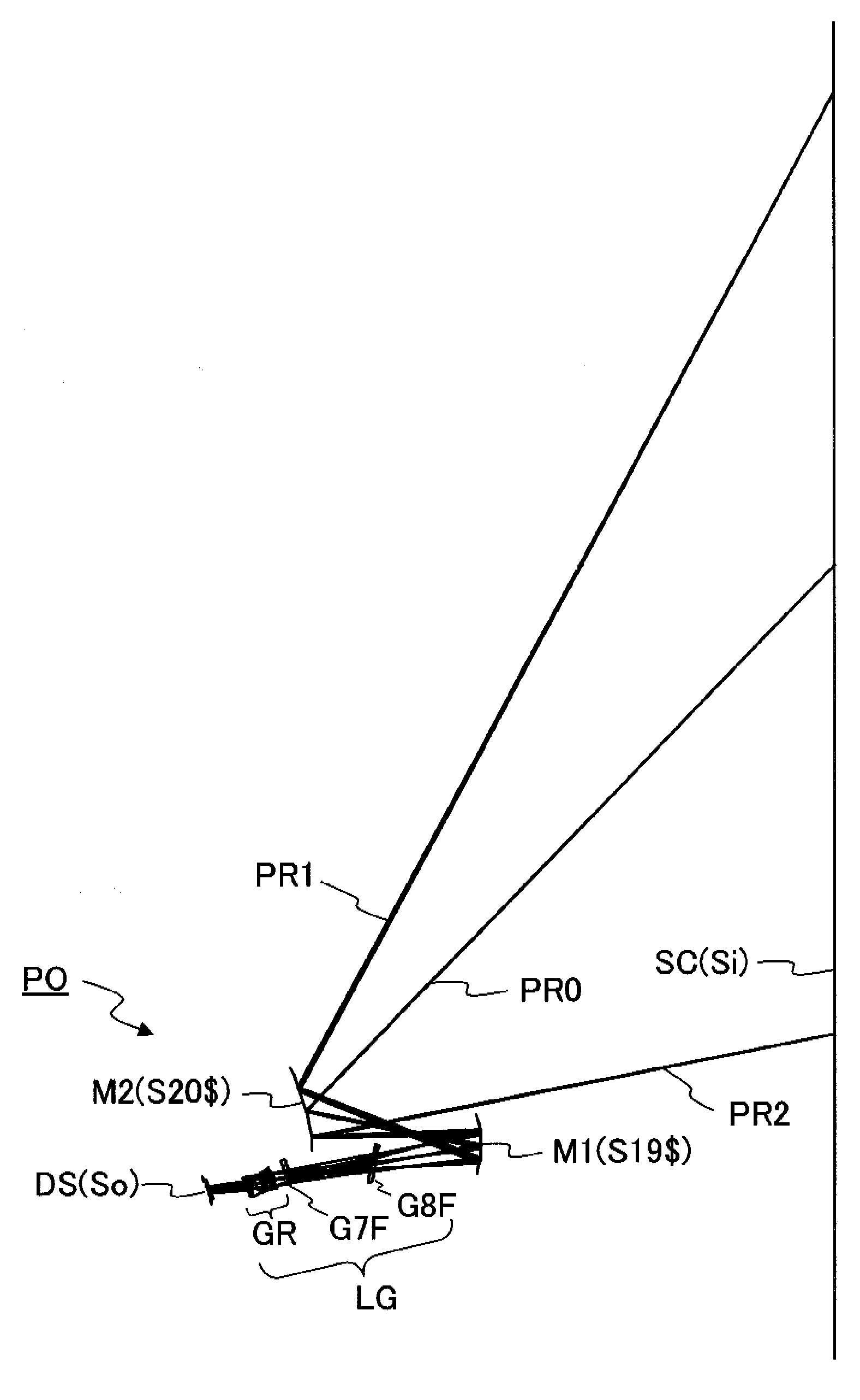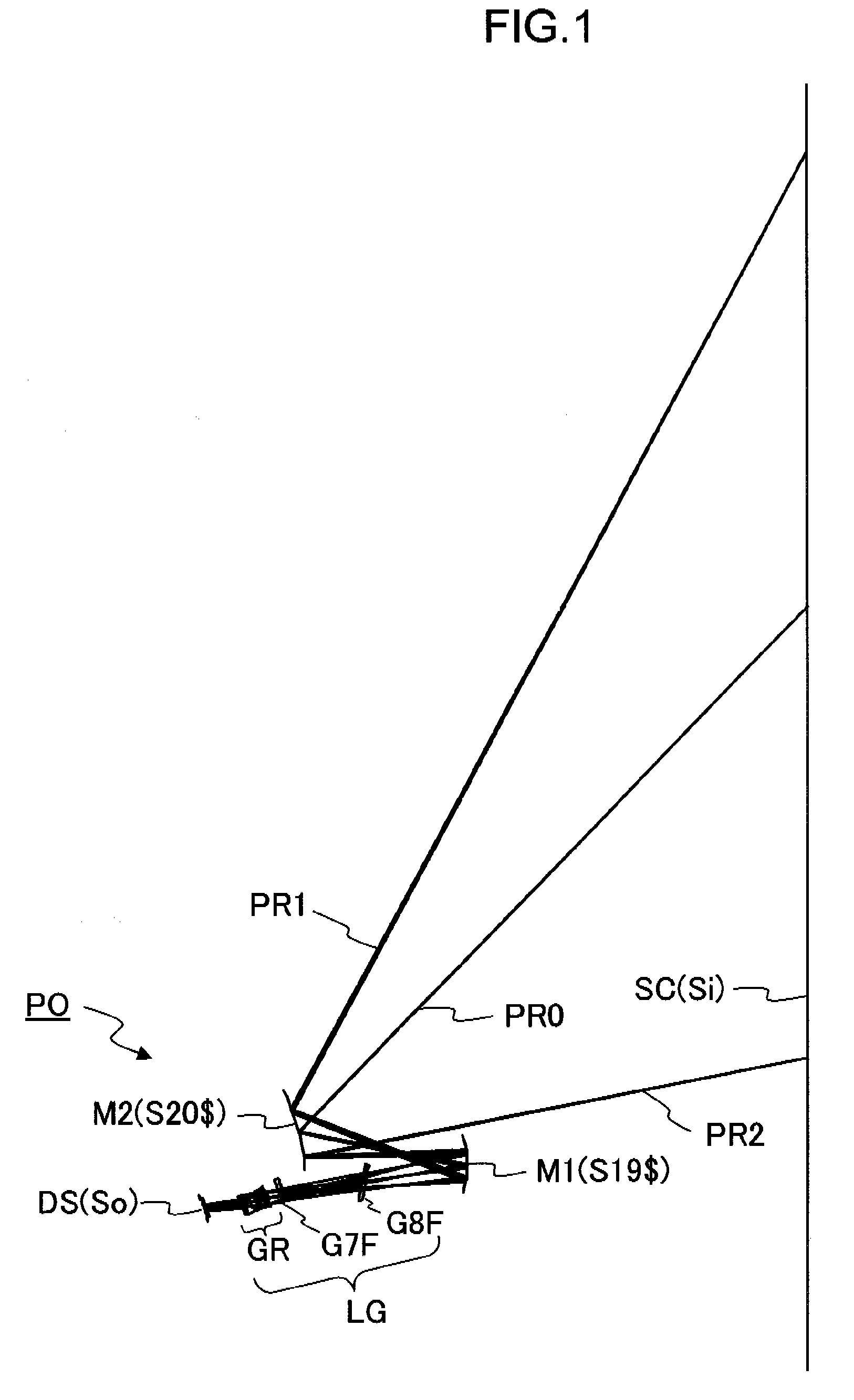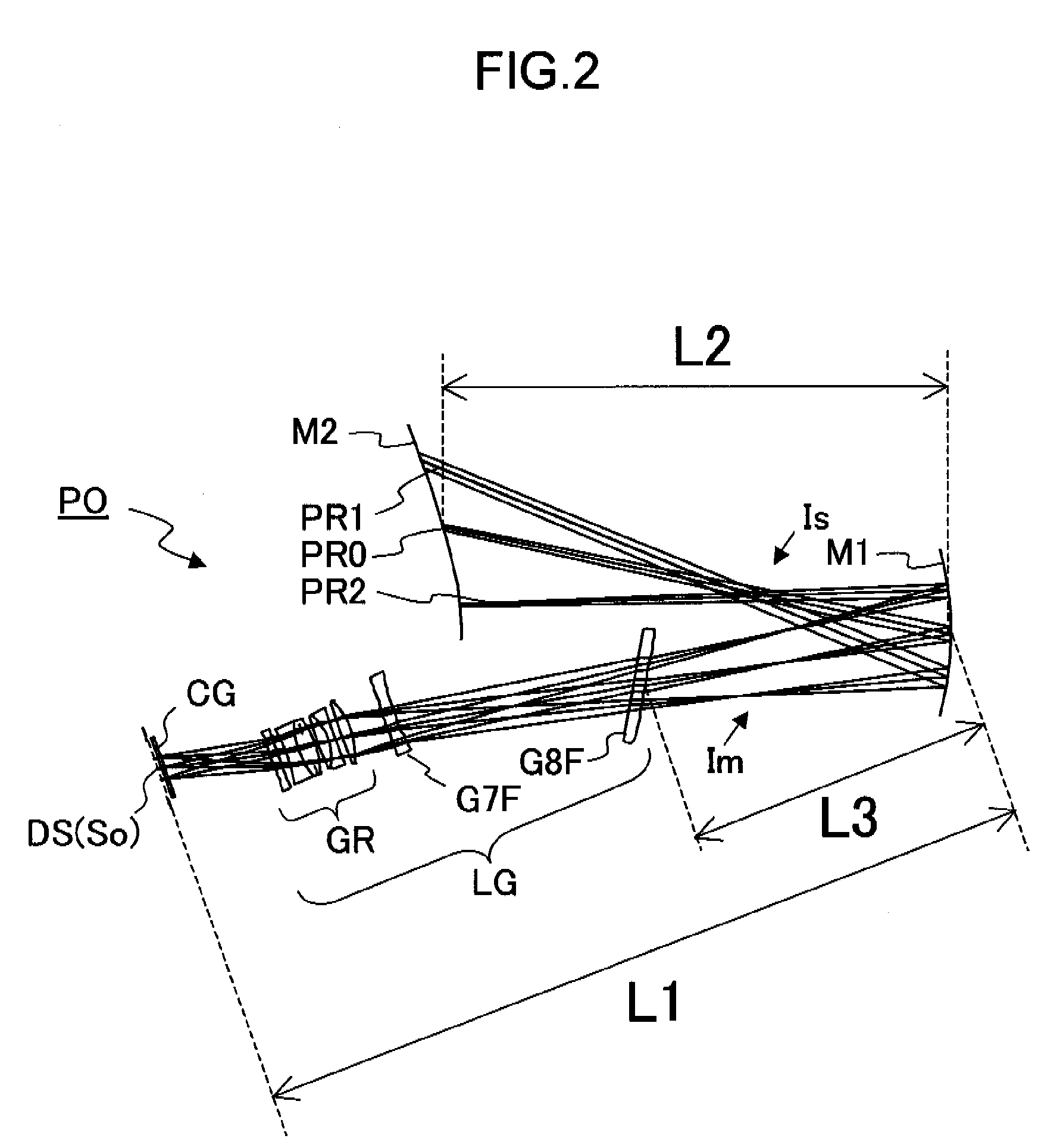Oblique projection optical system
a projection optical system and optical system technology, applied in optics, projectors, instruments, etc., can solve the problems of inefficient aberration correction, large mirror size, and difficult to achieve compactness of projection optical systems
- Summary
- Abstract
- Description
- Claims
- Application Information
AI Technical Summary
Problems solved by technology
Method used
Image
Examples
example 1
FnoY=4.77, FnoZ=4.64
Example 2: β=109.6, FnoY=3.00, FnoZ=2.97
[0113]Spot diagrams in the examples 1 and 2 are each shown in FIGS. 5 and 6. The spot diagrams show the imaging performance on the screen surface Si in terms of 3 wavelengths (460 nm, 546 nm, 620 nm) and 25 evaluation points. The scale in each spot diagram is ±1 mm. The coordinates (Y, Z) in FIGS. 5 and 6 are the local coordinates (Y, Z; mm; e-n=×10−n) on the screen surface Si that shows a projection position of the spot centroid at each evaluation point. Because both examples are composed of a plane-symmetric optical system with respect to the XY plane, the spot diagrams show only the half on the plus side in the Z direction on the screen surface Si, and the remaining half is not shown. These evaluation points are conjugate with the divisional points that are obtained by equally dividing longitudinally and transversely the half of the display device surface So in the Z direction into 4 parts. An ideal image formation point...
PUM
 Login to View More
Login to View More Abstract
Description
Claims
Application Information
 Login to View More
Login to View More - R&D
- Intellectual Property
- Life Sciences
- Materials
- Tech Scout
- Unparalleled Data Quality
- Higher Quality Content
- 60% Fewer Hallucinations
Browse by: Latest US Patents, China's latest patents, Technical Efficacy Thesaurus, Application Domain, Technology Topic, Popular Technical Reports.
© 2025 PatSnap. All rights reserved.Legal|Privacy policy|Modern Slavery Act Transparency Statement|Sitemap|About US| Contact US: help@patsnap.com



